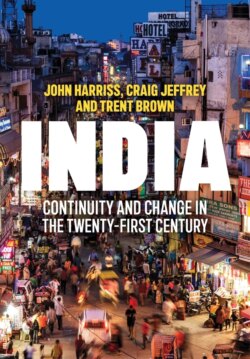Читать книгу India - Craig Jeffrey - Страница 33
3.5 Conclusion
ОглавлениеWe have argued that economic growth is not of value for its own sake, but only in so far as it improves the well-being of the people, and their chances of leading lives that they have reason to value; and we have addressed the question of how far India’s historically high rates of economic growth have been successful in making it possible for Indians to realize these objectives. Our conclusion is that the country has been much less successful in translating economic growth into ‘development’ than was hoped for by the policy makers who laid out the objective of achieving ‘inclusive growth’. Though material poverty – deprivation in regard to the most basic necessities of a decent life – has been reduced, in the aggregate, according to conventional measures, and increasingly so as India’s rate of economic growth has increased, it remains the case that a majority of Indians are still vulnerable to falling into poverty. Moreover, a study by S. Subramanian (2019) of data from a survey of consumer expenditure in 2017–18 – the results of which the government had sought to withhold from the public – suggests that income poverty nationally had increased again after 2011–12. Public provisioning of health care, which is the most important protection that poor people have against falling into poverty, is poor, and it compares very unfavourably with neighbouring countries. Direct indicators of well-being, such as the infant mortality rate and measures of nutrition among children, show that India is doing much less well than it should be in relation to the level of GDP per capita.
It also remains the case that the burden of poverty is borne disproportionately by those in the social groups that have historically been most discriminated against – Dalits, adivasis and, increasingly, Muslims – who are subjected to oppression (akin to racism) as well as to exploitation. The rate at which economic growth reduces material poverty has been less than in comparator countries – and notably less than in China – and it has been held back by increasing inequality. Social and economic mobility is very restricted, opportunities are very limited for the great majority of Indians, and one of the reflections of this is that the middle class is less numerous than has been supposed. Why hasn’t India done much better than this? This is the question we take up in the next chapter.
